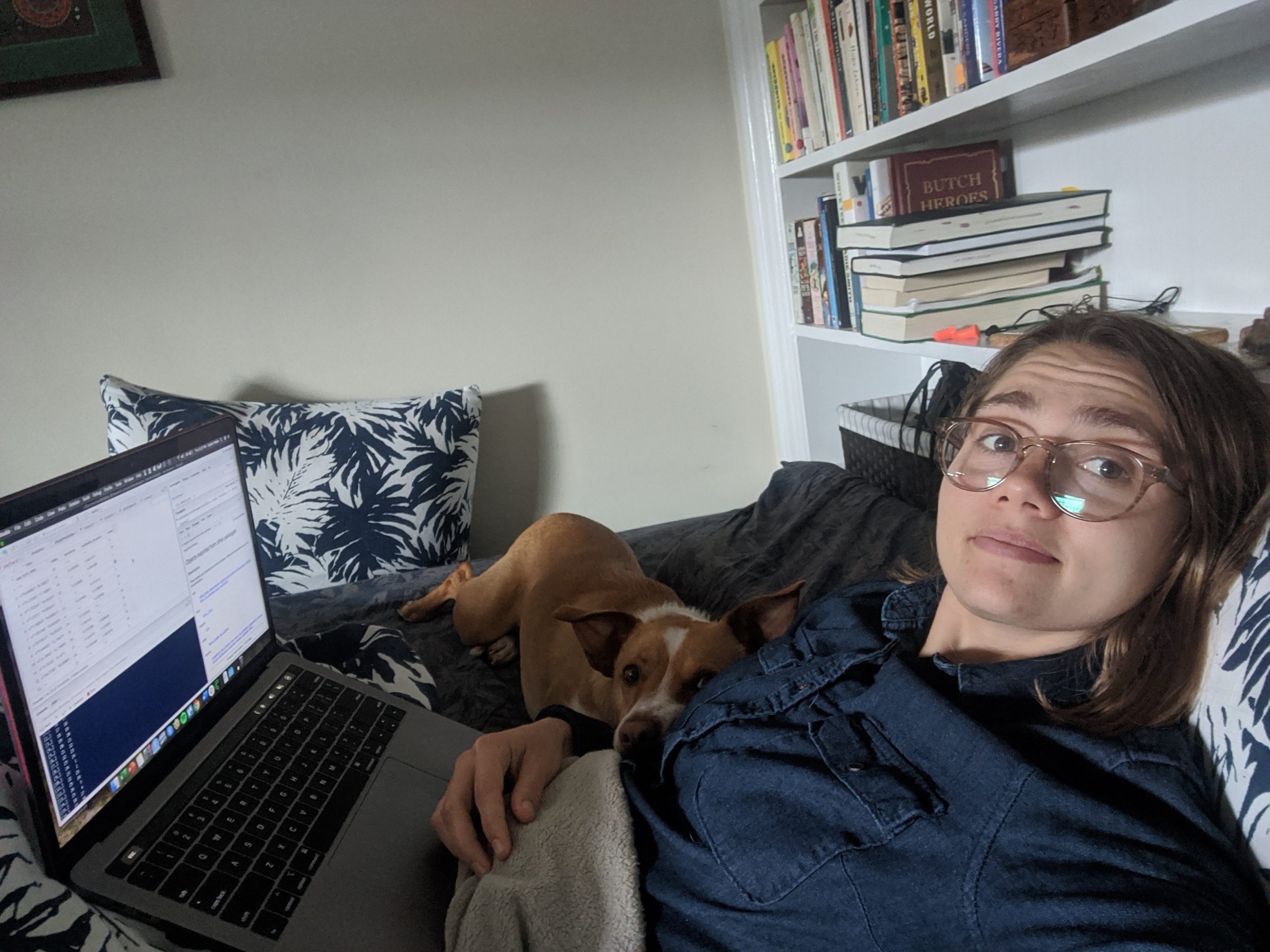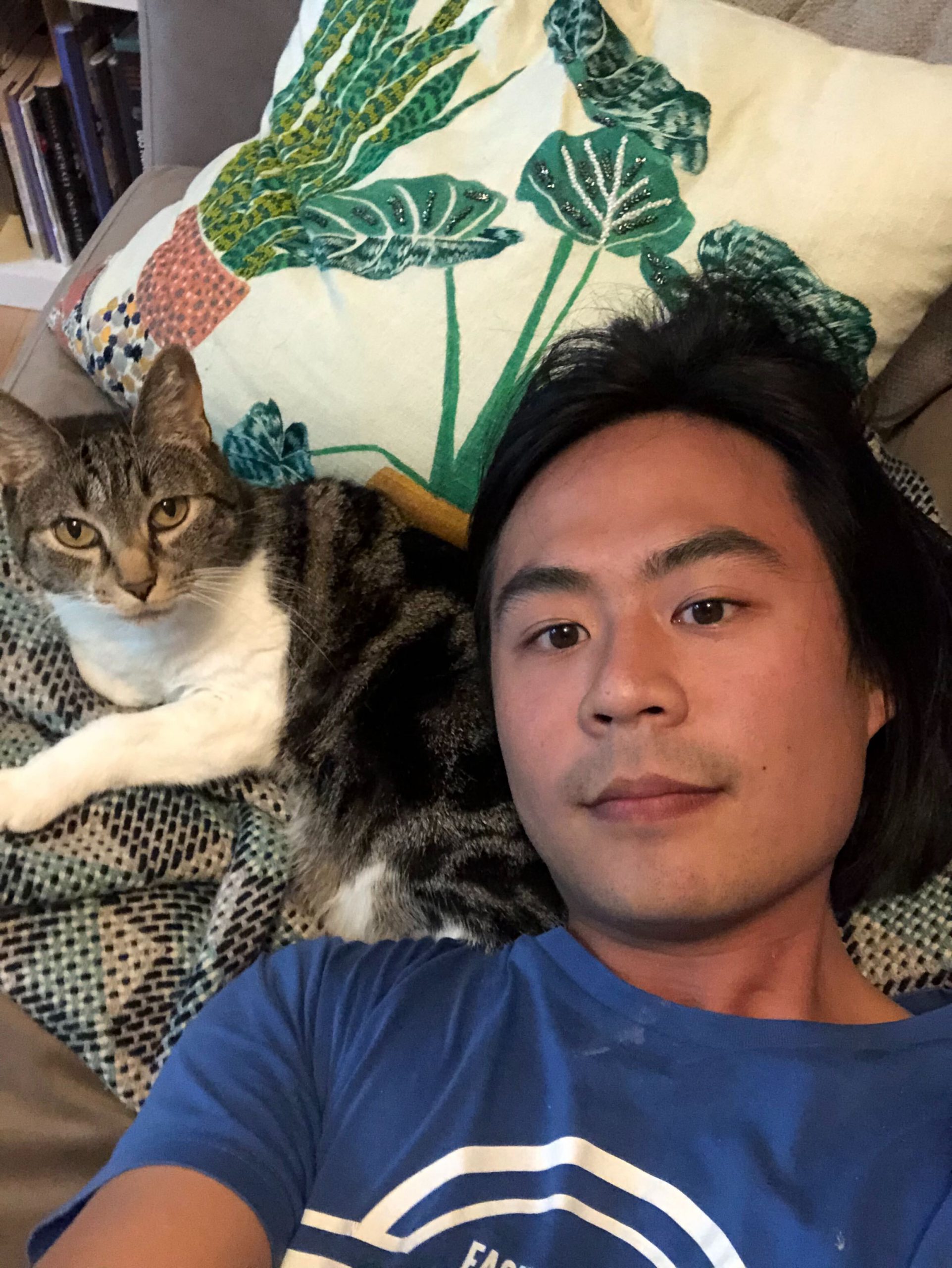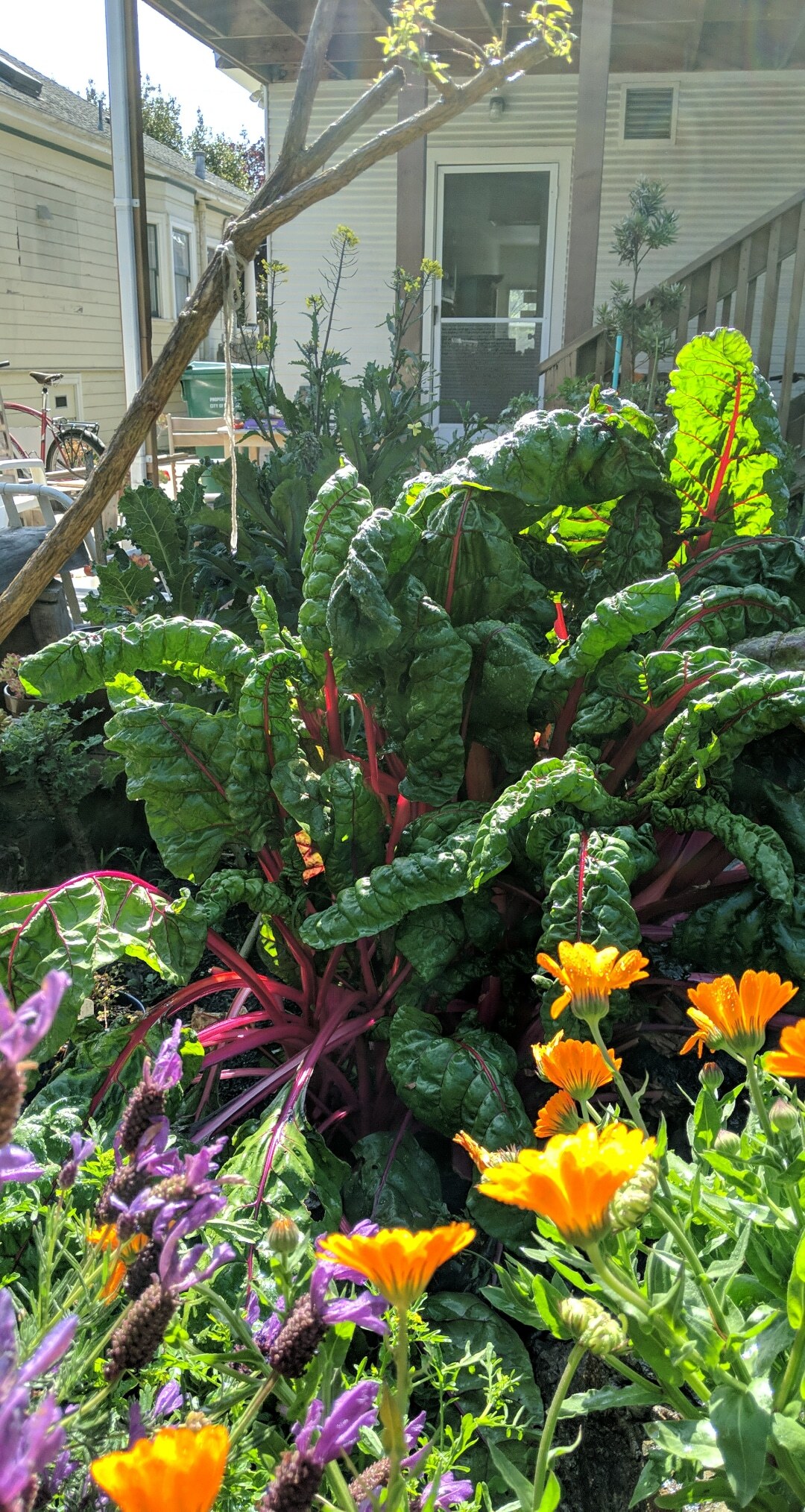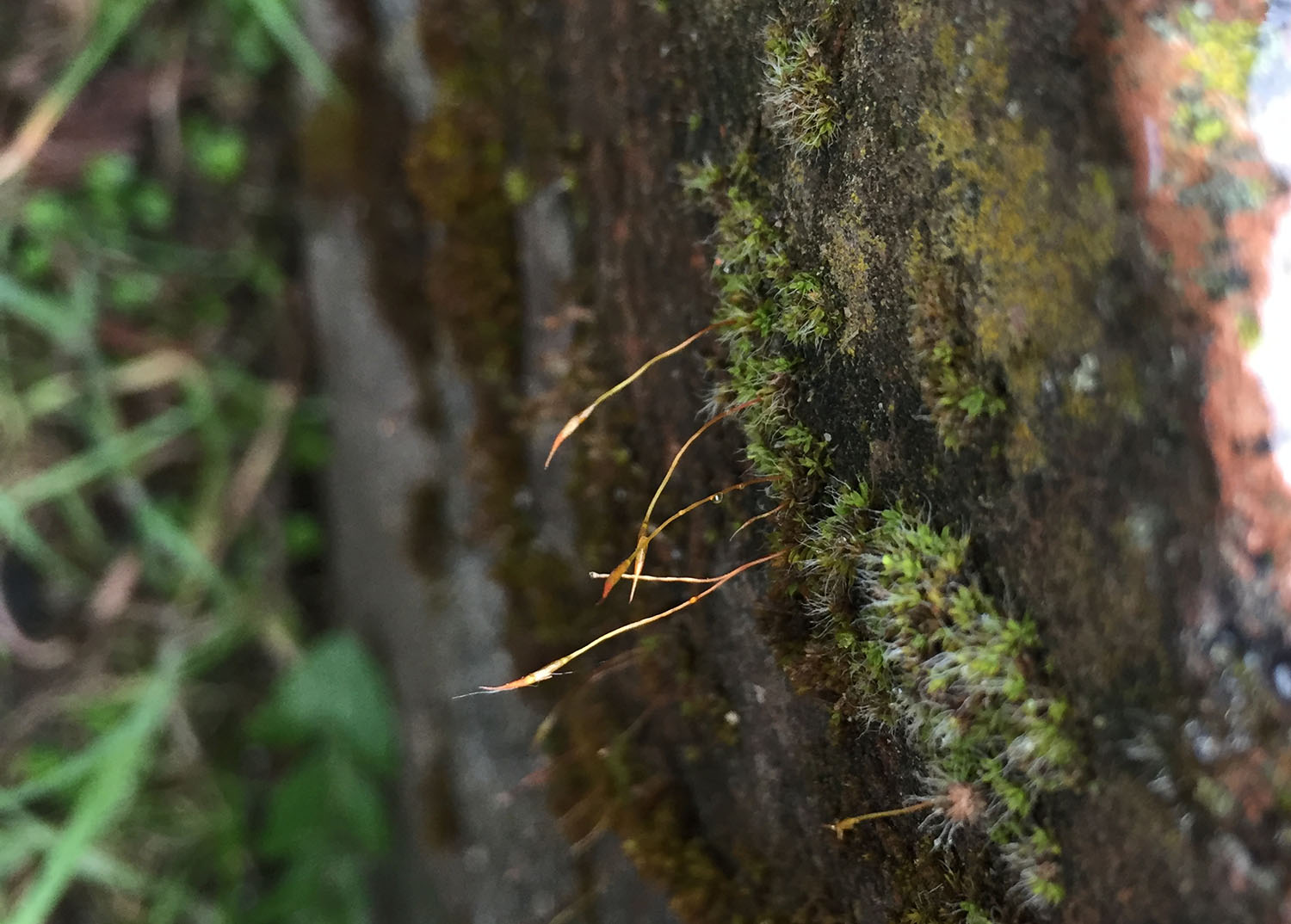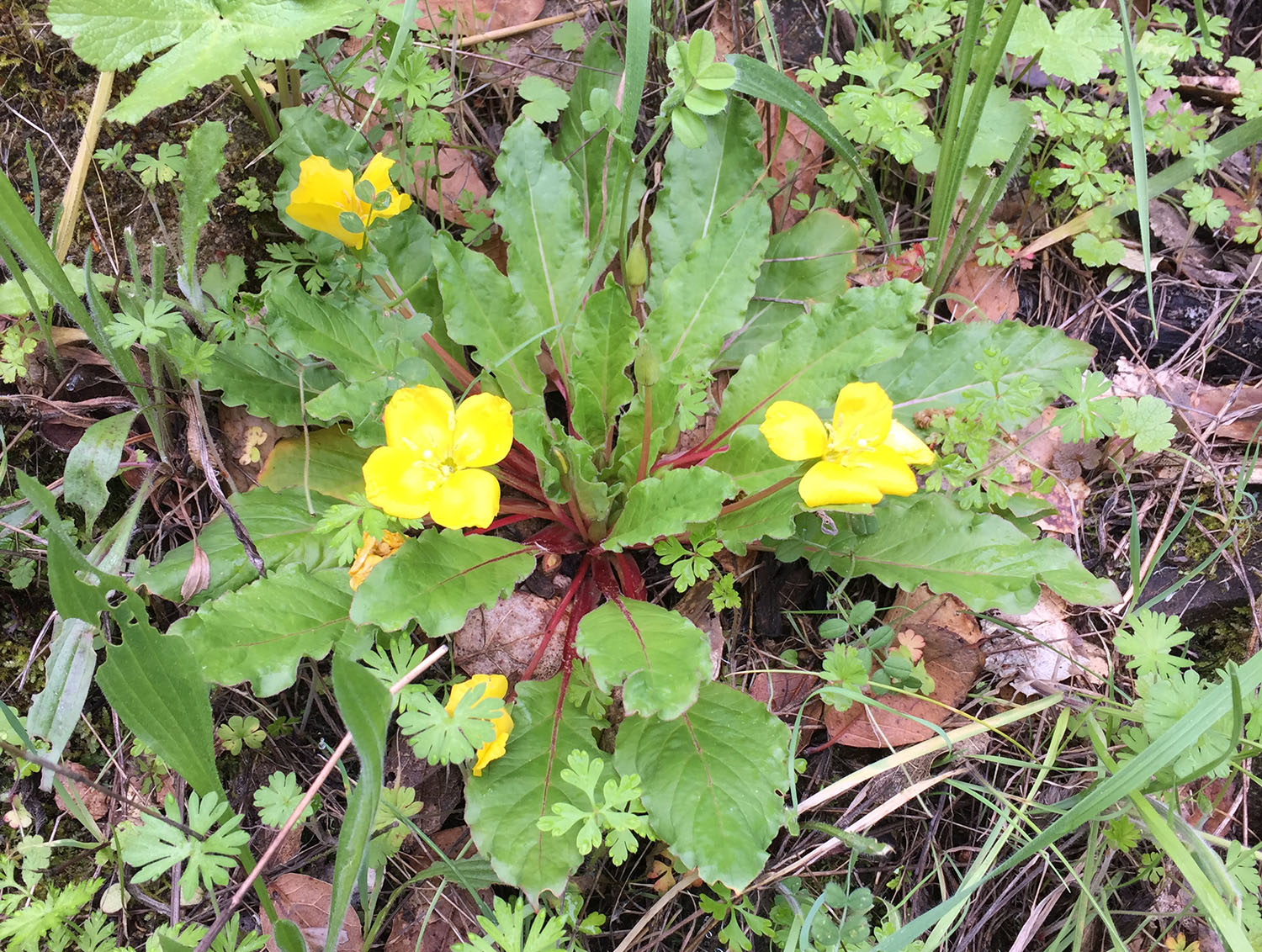Rlab in the time of COVID II
With the shelter in place order still in effect this week, Carrie and Mick are working from home with their pets. In other news, Keir shares a picture of the garden he’s growing at home with his family. Of particular note is the chard plant which is nearly as tall as Larkin!
Aside from trying to find time for everyone to get outdoors and run around, Keir has been hard at work. He recently finished transcribing a backlog of old field notebooks, made labels for previously unlabeled collections, and uploaded all the fern collection data to Duke’s Fern Labs Database. He also analyzed a dataset containing 34 different taxa of Pteridaceae with the aim of inferring whole genome duplications across the family — more to come on this later!
And of course Keir has been continuing work on his Pentagramma niche comparison project. Since his talk at Rancho Santa Ana Botanic Garden, he has continued to study the bioclimatic and elevation niches of all species of diploid and tetraploid Pentagramma. His findings indicate that in general, tetraploids inhabit environmental spaces that are not only colder, wetter and higher in elevation than those of diploid plants, but also that have more temperate seasonality and less seasonal precipitation. For the most part, the tetraploids have a consistently broader bioclimatic niche, however in the case of P. maxonii, the tetraploid niche is narrower than it is for the diploids.
Not all lab work has been business as usual, however. Due to recent travel restrictions, Maryam was unable to catch her flight to Lebanon where she would have conducted fieldwork for her dissertation, which will contain three chapters: the biogeography of Silene with an emphasis on the Mediterranean, the spatial phylogenetics of Caryophyllaceae, and a conservation assessment based on biodiversity, intact habitats and land protection status.
In the meantime, she has been using an open source GIS program to compile protected areas in western Lebanon and Syria so that she can later assess the different levels of land management and protection in relation to the concentrations of phylogenetic diversity. According to Maryam, rich native plant life is everywhere in Lebanon and Syria, including along the side of the highway — as opposed to the monocrop of invasive grass we see growing in American highway medians — and just because plants are growing next to an urban area doesn’t mean they should be overlooked.
Maryam has also been creating distribution maps for Caryophyllaceae using occurrence data uploaded from collected specimens or observations. Data has also been coming in from her iNaturalist project which utilizes citizen science to fill in data gaps in Lebanon and Syria.
Finally, Maryam has been working on a text analysis project involving a French text from 1966 called “Nouvelle Flore de Liban et de la Syrie.” Alongside some data science collaborators, she has been writing a Python script to compile a database that will allow for easier access of the book’s information and descriptions. Once Maryam can reschedule her fieldwork plans, this database can act like a guidebook for her travels.
